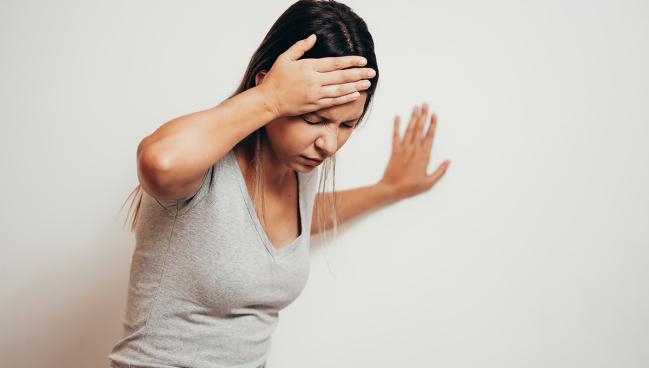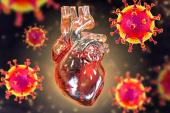Both COVID-19 and Vaccination Raise the Risk of POTS
The postural tachycardia, however, was much more frequent after the infection than after receipt of one of the vaccines.

The likelihood of getting diagnosed with postural orthostatic tachycardia syndrome (POTS) increases after both COVID-19 and vaccination against SARS-CoV-2 infection, although COVID-19 itself poses a greater risk, observational data suggest.
Comparing a 90-day period before exposure and a 90-day period after exposure, in fact, the probability of receiving a POTS-associated diagnosis was more than fivefold higher after a bout of COVID-19 than after vaccination (OR 5.35; 95% CI 5.05-5.68), according to researchers led by Alan Kwan, MD (Smidt Heart Institute, Cedars-Sinai Medical Center, Los Angeles, CA).
The study, published online Monday in Nature Cardiovascular Research, expands on sporadic reports of POTS occurring after COVID-19 vaccination by addressing the issue in a large cohort, Kwan told TCTMD.
“We are able to more definitively say that we think that this is a real observation,” he said. “It doesn’t quite bring it to the point of being able to tell an individual patient, ‘This is what your specific odds of POTS are after a vaccination,’ but we believe this essentially brings some validity to the observation that POTS may occur after vaccination, though notably at a significantly lower rate than after [COVID-19 itself].”
In general, the vaccines developed to combat COVID-19 safely and effectively reduce the risk of severe outcomes, although some rare side effects—most notably, myocarditis—have been reported following widespread rollout of the shots.
Kwan said his team was inspired to delve into POTS as a possible side effect based on anecdotal reports coming out of the specialized clinic at Cedars-Sinai that had been set up to manage the condition before the pandemic. “Recognized as a clinical syndrome that manifests with orthostatic intolerance and postural tachycardia, POTS is diagnosed based on clinical features, such as orthostatic dizziness, palpitations and presyncope, and a 10-minute stand test or a tilt table test that demonstrate a heart rate elevation of at least 30 beats per minute from supine to standing position,” the authors explain, noting that it has emerged as one of the features of postacute COVID-19 syndromes.
For the vaccine part of the study, the investigators examined electronic medical records from 284,592 vaccinated individuals (mean age 52 years; 57% women). Most (62%) received the shot from Pfizer/BioNTech, 31% the one from Moderna, 7% the Janssen vaccine from Johnson & Johnson, and less than 0.1% a mix of other shots.
POTS-associated diagnoses included POTS along with dysautonomia, mast cell disorders, fatigue, and Ehlers-Danlos syndrome. In a sequence-symmetry analysis, which used individuals as their own controls and compared risks in the 90 days before exposure with those in a similar interval after exposure, the likelihood of receiving one of these diagnoses was higher after vaccination (OR 1.33; 95% CI 1.25-1.41).
POTS was more likely to be diagnosed than a collection of common primary care diagnoses (OR 1.10; 95% CI 1.03-1.17), although there was a stronger association between vaccination and myocarditis (OR 2.57; 95% CI 1.02-6.77).
When looking for a potential link between SARS-CoV-2 infection and POTS, Kwan et al examined electronic health records from 12,460 individuals (mean age 47 years; 50% women) with a documented infection. COVID-19 was associated with greater odds of both POTS-associated diagnoses (OR 1.52; 95% CI 1.33-1.72) and common primary care diagnoses (OR 1.40; 95% CI 1.31-1.50).
For most of the conditions examined, including POTS-associated diagnoses, rates after SARS-CoV-2 infection were higher than those seen after receipt of one of the vaccines.
Vaccination Still ‘Best Option’ for Protection
Asked about potential mechanisms to explain the findings, Kwan said POTS is typically thought of as an issue with the autonomic nervous system, which maybe damaged by COVID-19. It’s less clear how vaccination might be causing POTS, but it could be related to an inflammatory reaction to the spike protein generated by the mRNA or other components of the vaccines, he said. But all of this, he stressed, is “pretty speculative.”
Even without clear mechanisms to explain the findings, the medical community should be aware of the potential links between COVID-19 and vaccination and POTS, Kwan said.
“The rates of POTS after infection were so much higher that this shouldn’t be taken as anything discouraging vaccination,” he added. “I think vaccination is still your best option to protect your health, including from POTS related to [SARS-CoV-2] infection.”
And in a broader context, it’s important to raise awareness about POTS itself within cardiology “because there are treatments, there are ways to help these patients feel better,” Kwan said.
He and his colleagues note that standard POTS treatment starting with conservative therapies like salt tablets, hydration, structured exercise programs, and compressive stockings have been used to manage these patients. “When clinically indicated, usually for substantial or persistent symptoms, medication therapy, such as beta-blockers or ivabradine, were prescribed as tolerated for tachycardic response and midodrine for orthostatic intolerance,” they add.
“In patients with hyperadrenergic variants, clonidine was given or considered,” Kwan et al note. “Accordingly, patients studied received clinical care that was reviewed to be consistent with guidelines recommendations, and referral to local experts in managing POTS was often pursued in cases that warranted consideration for more specialized evaluation and therapies.”
Todd Neale is the Associate News Editor for TCTMD and a Senior Medical Journalist. He got his start in journalism at …
Read Full BioSources
Kwan AC, Ebinger JE, Wei J, et al. Apparent risks of postural orthostatic tachycardiac syndrome diagnoses after COVID-19 vaccination and SARS-CoV-2 infection. Nat Cardiovasc Res. 2022;Epub ahead of print.
Disclosures
- The study was supported, in part, by National Institutes of Health grants; a Doris Duke Charitable Foundation grant; the American Heart Association; the American Society of Nuclear Cardiology 2021 Institute for the Advancement of Nuclear Cardiology Research Award; the Smidt Heart Institute; and the Burns & Allen Chair in Cardiology Research, Cedars-Sinai Medical Center.
- Kwan reports no relevant conflicts of interest.





Comments